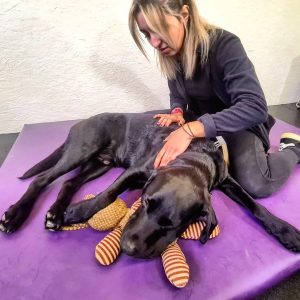As pet owners, our top priority is to ensure the happiness and well-being of our furry companions. However, unlike humans, our pets can’t verbally tell us when something is wrong. They rely on body language, behaviour, and subtle signs to communicate discomfort or pain. Understanding how to recognise these signs is crucial to ensuring that your pet stays healthy and receives prompt care.
If you’ve ever asked yourself, “Is my pet in pain?” this blog will guide you through the signs to look out for and what steps you can take.
Common Signs Your Pet May Be in Pain
While animals often hide discomfort due to instinct or fear, there are several behavioural and physical signs you can watch for. Here’s a list of common indicators that your pet may be experiencing pain:
1. Changes in Mobility and Activity
Pets in pain often exhibit changes in how they move or interact with their environment. Watch for:
- Limping or reluctance to put weight on a limb
- Stiffness, particularly after resting or sleeping
- Reduced activity—they may avoid running, jumping, or climbing
- Hesitation to get up or lie down
- Avoiding stairs or furniture they previously accessed with ease
2. Vocalisation
While some pets may remain quiet when in pain, others can be more vocal:
- Whining, yelping, or growling without clear cause
- Unusual purring (for cats) or sudden barking (for dogs)
- Increased moaning or grumbling, especially when touched or moved
3. Changes in Eating and Drinking Habits
Pain can reduce your pet’s interest in food or water, leading to:
- Loss of appetite or refusal to eat familiar foods
- Difficulty chewing, which might indicate dental pain
- Excessive drooling
- Noticeable changes in water consumption
4. Behavioural Changes
Changes in your pet’s mood and behaviour are often strong indicators of discomfort:
- Restlessness, struggling to settle or sleep
- Lethargy or seeming unusually tired
- Aggression when being touched or approached
- Hiding or isolating themselves in odd places
- Excessive grooming or licking a specific area repeatedly
5. Changes in Posture and Appearance
A pet in pain may adopt different postures or show physical signs:
- Arched back or a hunched posture
- Tense, rigid muscles
- Swollen joints, paws, or visible injuries
- Squinting or reluctance to use their eyes
6. Breathing and Heart Rate Changes
Increased heart rate or unusual breathing patterns could suggest pain:
- Rapid, shallow breathing or panting in both cats and dogs
- Increased heart rate, shaking, or trembling without obvious cause
Recognising Pain in Cats vs. Dogs
Dogs and cats, although both cherished pets, often show pain differently. Understanding these species-specific signals can be essential.
Dogs
Dogs are typically more vocal when in pain, often whining or yelping when a sore area is touched. They may also seek comfort from their owners, becoming more clingy or restless. Licking or chewing on the affected area is another common behaviour.
Cats
Cats are more likely to hide pain, making it harder to detect. You might notice your cat withdrawing, hiding more often, or becoming aggressive when approached. Changes in grooming habits are a key indicator—some cats over-groom a painful area, while others stop grooming altogether, resulting in an unkempt appearance.
What to Do If You Think Your Pet Is in Pain
If you suspect your pet is in discomfort, it’s important not to panic. Here’s what you can do to help:
1. Contact Your Vet
The first step should always be to reach out to your vet. A professional assessment is essential to determine the cause and severity of your pet’s pain. Your vet may recommend tests, such as X-rays or blood work, to make an accurate diagnosis.
2. Avoid Human Medications
Never give your pet over-the-counter human medications unless instructed by a vet. Many medications that are safe for humans, such as ibuprofen or paracetamol, are toxic to pets and can lead to serious health issues.
3. Provide Comfort
Until you can visit your vet, try to make your pet as comfortable as possible:
- Create a quiet, cosy space where they can rest undisturbed.
- Ensure easy access to food, water, and a litter box or toilet area.
- Avoid handling areas that seem to be causing pain.
4. Monitor Behaviour
Keep an eye on any changes in your pet’s condition. Does their discomfort seem to fluctuate throughout the day? Are there particular activities or movements that worsen the pain? Documenting these details can help your vet diagnose the issue more effectively.
Preventing Pain in Pets: Tips for a Pain-Free Life
Prevention is always better than cure. Here are some tips to keep your pet comfortable and minimise the likelihood of pain:
- Regular Vet Visits: Routine check-ups can catch potential health problems before they become serious.
- Healthy Diet: Ensure your pet has a nutritious and balanced diet to support their overall well-being.
- Exercise and Weight Management: Keeping your pet at a healthy weight reduces the strain on their joints and helps prevent conditions like arthritis.
- Dental Care: Regularly check your pet’s teeth and gums for signs of discomfort, such as bad breath, swelling, or loose teeth.
- Comfortable Living Space: Provide supportive bedding and consider ramps for older pets. Minimise activities that may cause joint stress, especially in older or larger pets.
Final Thoughts
Our pets bring so much joy into our lives, and it’s our responsibility as pet owners to ensure they live comfortably and pain-free. By staying vigilant for the subtle signs of discomfort and addressing any issues early with professional help, you can ensure that your pet enjoys the best quality of life possible.
If you’re ever unsure about your pet’s health or behaviour, don’t hesitate to contact your vet. Being proactive about your pet’s well-being will not only prevent minor issues from becoming major problems but also ensure more quality time with your beloved companion.













